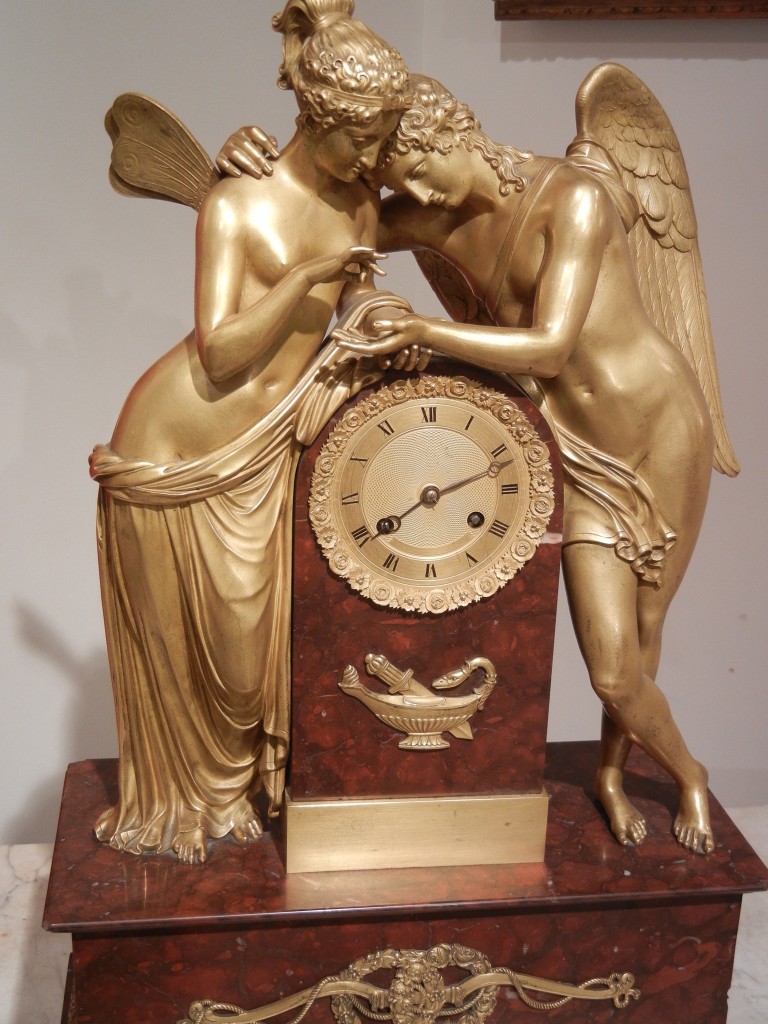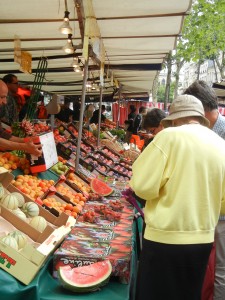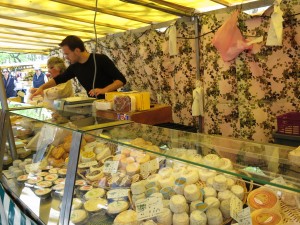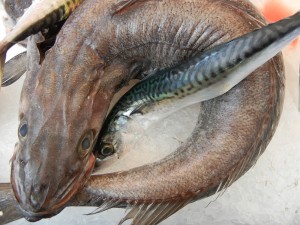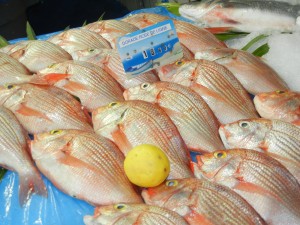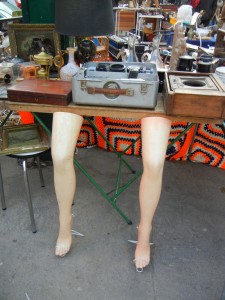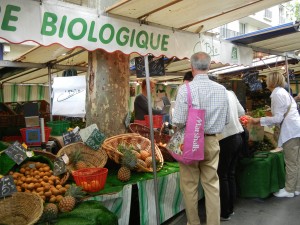Tip #2: Arrive Early for Best Selection, or Late for Best Deal
…and Tip #3: Ask Permission before Taking Photos
The specific days and hours that markets are open for business are listed as part of each market description in my book Markets of Paris. Within that range, though, what is the BEST time to arrive?
Well, it depends. If you’re looking for the best selection and most impressive displays, then arrive early — ideally within the first hour or so of the market’s opening. Generally, that means about 9 or 9:30 am. That’s my goal. Not only is the selection at its fullest (popular seasonal items often sell out before the market’s closing), but the lower angle of the sun casts a comfortable glow without being overly harsh.
I like to arrive early for the broadest selection.
Displays look their best and are stocked to the fullest.
Some vendors take their presentations so seriously that they seem to be in competition. Fishmongers are among the most creative.
Schools of fish seem to swim through the ice, arching over each other’s tails or tucking among ferns. Lemons add a splash of color and sometimes serve as a prop for opening the fishes’ mouths.
It’s fun to photograph the displays. But beware of Tip #3: Always ask permission first! (Puis-je prendre des photos, s’il vous plaît?”). Same goes for photographing the displays at flea markets or any of the other markets in Paris. Many vendors put great care, artistry, and humor into making their stands attractive. Some of them don’t appreciate when tourists take photos but don’t buy anything. For the best experience, ask permission and respect the answer.
Alternatively, arriving later affords a chance for better deals. At some markets the vendors slash prices as the hours tick by. The sellers don’t want to pack up all their goods, especially perishables, so they’re more willing to reduce prices. The reduction is sometimes greater for a higher volume purchased. I’ve seen produce vendors pick up their chalkboards, squeeze juice from an orange over the slate to erase the price, brush the board dry with a few sprigs of parsley, and then scribble a lower price. Afterwards the shriveled items were tossed on the ground. If you go on the later side, expect that both selection and quality deteriorate as closing time approaches.
As soon as the food markets close, city sanitation workers wearing green uniforms arrive to sweep up the remains. Gleaners can often be seen rifling through the debris searching for edible items, bringing to mind Agnès Varda’s brilliant movie The Gleaners and I.
One more tip about timing. Many markets that operate on Sunday are open only until about noon. By early afternoon, the vendors are enjoying the remains of the weekend with family and friends. If you pick a market from the list “Open on Sunday” (see pp. 288-290 in Markets of Paris), refer to the detailed descriptions to be sure you know the specific hours. Take it from my experience: It’s a bummer to trek across the city in eager anticipation of a market only to arrive as it’s being disassembled and the hint of an earlier lively scene only vaguely evident from a crumpled head of lettuce along the sidewalk.

